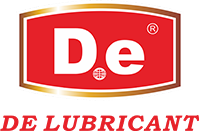
Summary of reasons for Burning oil (40)
Different engines have normal oil consumption values, and different engine models have different normal oil consumption. For example, BMW's oil consumption limit is 0.7 l / 1000 km, while for truck diesel engines, many manufacturers require that less than 2.24 l / 1000 km is normal. The following lists the reasons for the engine "burning" oil, used in automobile maintenance encountered "high oil consumption", "burning" oil problem reference.
1, oil external leakage
There are many causes of oil leakage, including: oil lines, oil drain ports, oil pan liners, valve housing liners, oil pump liners, fuel pump liners, timing chain cover seals, and camshaft seals. The above possible leakage factors can not be ignored, because even a small leakage will lead to a large amount of oil consumption. For example, a drop every six seconds means 0.56 litres of engine oil per 100 kilometres. The best way to detect leaks is to put a light-colored cloth at the bottom of the engine and check after starting the engine. The leakage site can be judged by the position of the oil droplets on the cloth.
2. Front and rear oil seals are faulty
Damage to the front and rear main bearing oil seals will certainly lead to oil leakage. This condition can only be found when the engine is running at load. The main bearing oil seal must be replaced after wear, because as with oil leakage, it will lead to very high leakage.
3. Main bearing wear or failure
Worn or faulty main bearings can throw up excess oil and be thrown against the cylinder wall. As bearing wear increases, more oil will be thrown up. For example, if the bearing design clearance of 0.04mm can provide normal lubrication and cooling function, if the bearing clearance can be maintained, the amount of oil thrown out is normal, and the bearing will not be damaged. When the gap is increased to 0 or 08 mm, the amount of oil thrown out will be five times the normal amount. If the clearance is increased to 0.16 mm, the amount of oil emitted will be 25 times the normal amount. If the main bearing throws out too much oil, the cylinder will splash more, so that the piston and piston ring can not effectively control the oil. This can lead to burning oil or carbon deposition on the piston and piston rings. Usually, if too much oil is lost on the main bearing, the connecting rod bearing will lack oil, resulting in insufficient oil splashing on the cylinder wall at some low speeds, leading to piston ring and piston wear, unable to control oil at high engine speeds. So the consequence of main bearing wear is high oil consumption.
4, connecting rod bearing wear or damage
The impact of connecting rod bearing clearance on oil is similar to that of main bearings. In addition, the oil is dumped more directly against the cylinder wall. Worn or damaged connecting rod bearings lead to too much oil thrown against the cylinder wall, resulting in the piston and piston rings designed to control the normal amount of oil can not effectively control too much oil, so that the excess oil into the combustion chamber is burned off, that is, high oil consumption.
Note: Insufficient bearing clearance will not only lead to its own wear, but also lead to wear of the piston, piston ring and cylinder wall.
5, camshaft bearing wear or damage
Camshaft bearings are usually pressure lubricated, if the clearance is too large, excess oil will be lost. Lost oil can soak the valve guide and valve stem, resulting in increased oil consumption.
6, crankshaft journal wear
Worn crankshaft journal will have the same effect on oil as bearing wear. When they wear out the circle, the clearance between them and the round bearing will be uneven. The size of the clearance between the crankshaft journal and the bearing that is out of circle changes in the rotational motion, which will throw out more oil. Bearings that are out of circle need to be reground and paired with smaller bearings.
7. The cylinder liner is worn into a cone or out of circle
Oil consumption can be controlled by pistons and piston rings for slightly tapered and out of round liner. However, as the cylinder liner taper and the degree of loss of roundness increases, the control of oil consumption becomes more and more difficult. This is due to a combination of many factors. As the gap between piston and cylinder liner increases, the piston will swing during operation. This instantaneous tilt will cause excess oil to be trapped on one side of the piston, as will the piston ring. In this way, as the piston continues to swing back and forth, some oil will escape into the combustion chamber. For each turn of the crankshaft, the piston completes one up and one down stroke. When the engine is running at 3000rpm, the piston rings running in the deformed cylinder liner will undergo 6000 changes in size and shape per minute. As a result, at high speed, the piston ring may not be able to adjust its clearance with the cylinder liner in time. Therefore, as long as the above situation occurs, it will lead to the engine oil consumption is too high.
8. Deformation of cylinder liner
Different from the cylinder liner loss of roundness caused by wear mentioned in 7, there are some other reasons, such as uneven heating or unequal cylinder head bolt tightness, may lead to the distortion of the cylinder liner, resulting in the piston ring can not form appropriate contact with the surface of the cylinder liner, oil scraping function is reduced; As a result, excessive oil remains locally, which is eventually burned into the combustion chamber, resulting in increased oil consumption.
9. The positive pressure ventilation valve or pipe of "PCV" crankcase is blocked
The main function of PVC is to recycle the mixture from the engine combustion chamber into the crankcase and reduce the content of unburned hydrocarbons. The INJECTION MIXTURE IS A MIXTURE OF AIR, FUEL, AND COMBUSTION EXHAUST GASES THAT, DUE TO HIGH PRESSURE, ENTERS THE CRANKCASE THROUGH THE GAP BETWEEN THE PISTON/PISTON RING AND THE CYLINDER SLEEVE DURING THE WORKING STROKE. PVC systems usually have a pipe that runs from the crankcase to the carburetor or intake manifold. The vacuum generated by the intake manifold of the engine will be sucked out of the crankcase, into the combustion chamber, and recycled again. The PVC valve may be blocked by sludge, paint film or other impurities in the mixed channeling gas. This will lead to oil deterioration, excessive sediment generation, resulting in piston ring obstruction, increased oil consumption, premature piston ring wear; The crankcase pressure increases, resulting in the failure of the crankshaft seal ring, oil leakage, and deterioration of the engine condition.
10, honing abrasive wear
If the cylinder liner has been honed or polished, it must be cleaned as required to prevent residual metal debris or abrasive damage to the piston ring groove surface. Cleaning methods are as follows: after honing, the cylinder liner must be thoroughly cleaned with a brush dipped in soapy water, and then immediately coated with oil; Or clean the cylinder wall with 10# lubricating oil and wipe it carefully. Repeat the process until all foreign bodies have been removed. Whichever method is used, the final inspection is required: wipe the liner table with a white cloth



Contact us
Tel:+86-752-6391516
Fax:+86-752-6391556
Address:Longcheng Road Plant, Jelong Village, Yuanzhou Town, Boluo County, Huizhou City, Guangdong Province
E-mail:info@de-lubricant.com
About us

National Enquiry number:

Good quality and good faith service Efficiency from the lubrication
Online consulting
Copyright::Desaien Lubricant Co., Ltd. 粤ICP备14044805号 Technical support: xiaohu888.com






